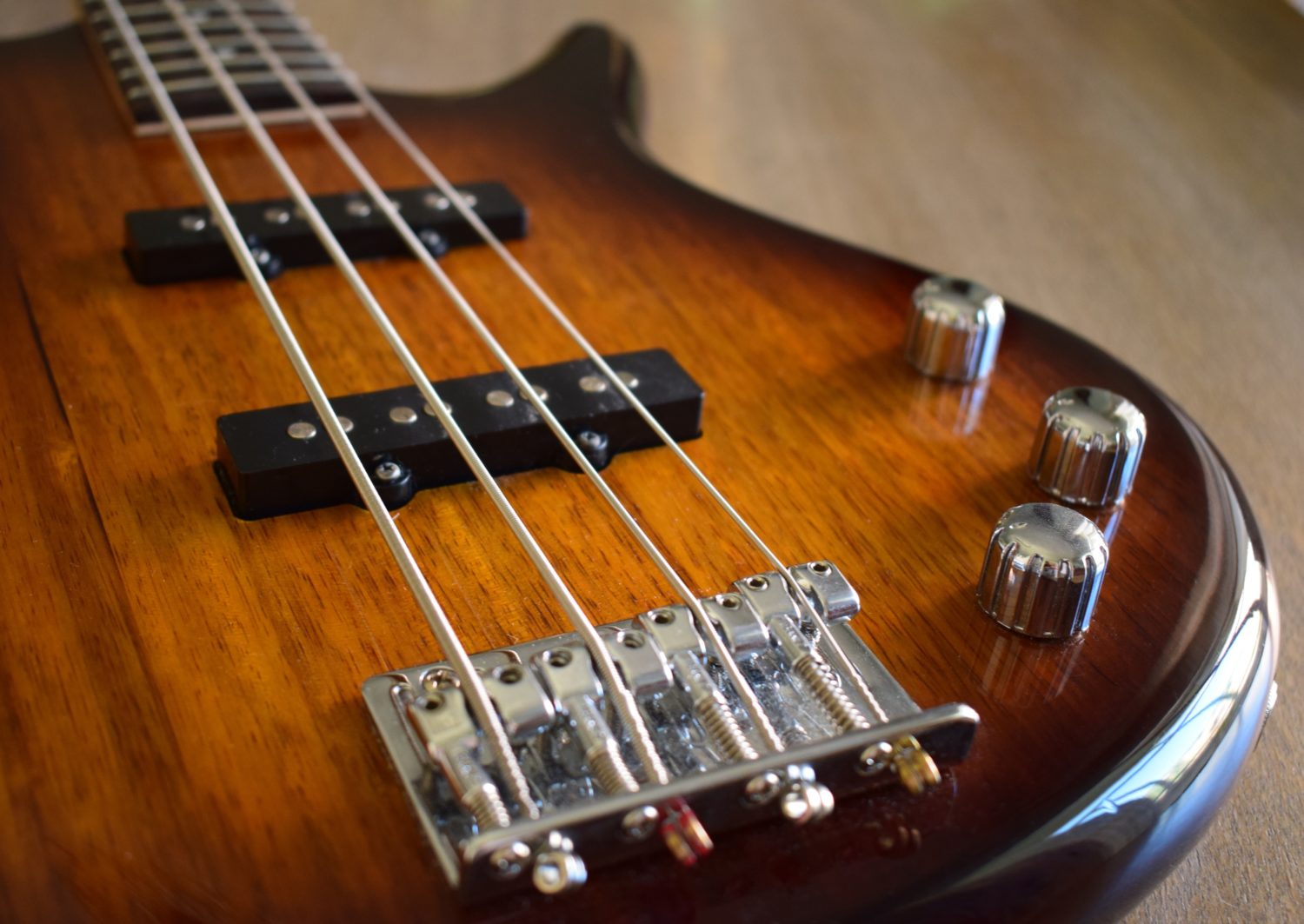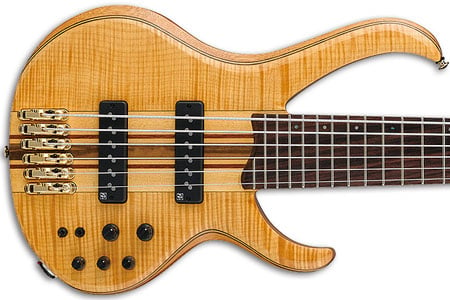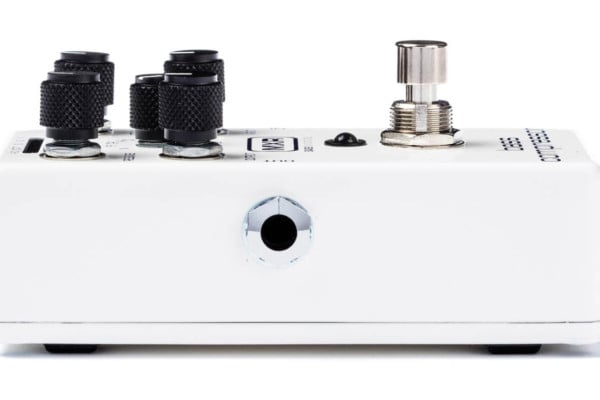Series vs. Parallel Wired Pickups

Q: Could you explain in as simple terms as possible the difference between series and parallel circuitry in pickups? Could you offer some examples where one is more appropriate than the other? (I realize that this may boil down to a preference thing, if so, could you give examples where you would choose one over the other?) Thank you for your dedication to the “Ask Damian” column. With so much information on the web, it’s important to have go-to places for learning. You offer a vital and reliable resource to the bass community.
A: Thank you for the kind words! I’m thrilled to hear that people dig this series. I’m always amazed by the number of people that I meet all around the world who are dedicated readers. Thank you all!
Basically, when pickups are wired in series, the signal flows first through one pickup and then the other. In other words, the output of pickup 1 feeds to the input of pickup 2. This creates more resistance to the signal which translates into a beefier sound (as well as more volume. The output can be 30% hotter when wired in series).
When the pickups are wired in parallel, they are wired so that your signal goes into both pickups simultaneously and back out to be combined at the output. Your signal gets diverted into two separate signals and each flows to one pickup or the other, which then come back together at (or just before) the output jack of the instrument.
So you get a longer signal chain when wired in series as your one signal travels through both pickups, one after the other. In parallel, you have two shorter signal chains which are combined. This is why you have more resistance (and more beef and volume) when using pickups wired in series.
I know some players who have installed series/parallel switches on their Jazz basses in order to make them more versatile. The reasoning being that J-basses are typically wound in parallel but if you switched them to series, you could get it to sound more like a P-bass (especially if you favor that front pickup). Honestly, I don’t have a lot of experience with wiring and have typically just sought out basses that sounded the way I wanted and never dove too deeply beyond that, until a repair was necessary, at which point I’d contact a builder or repair person and ask what I needed to know in order to do the repair myself (i.e.: what kind of pot do I need, etc.) I like doing repairs myself as that’s how I learn about this stuff, and I’m still learning!
Personally, whenever I’ve had a bass with a switch for series/parallel, I almost never switched it to parallel because it seemed too anemic compared to the series wiring. But, I don’t slap and have always preferred a bigger, slightly more aggressive sound.
However, the parallel wiring does have more shimmer in the treble end of the spectrum. It’s also a smoother sound. Players who like the more modern “crispy” and pointed bass sound may prefer wiring in parallel. I could also imagine a bass made for slapping would be wired in parallel as those pops would really pop.
So, to my ears:
- Series: beefier, more aggressive sound. More lows and mids (and volume)
- Parallel: More of a trebly sound. More shimmer in the treble and less output
I hope that helps!
Readers, I’d love to hear from you on this subject. Please share your experience and thoughts on this topic in the comments.
Have a question for Damian Erskine? Send it to [email protected]. Check out Damian’s instructional books, Right Hand Drive and The Improviser’s Path.




How about humbucker pickups? In the same pickup, ignoring other pickups in the bass, the two coils can be wired in parallel or series, even isolating a coil and sounding as a single coil (the typical 3-position-ON-ON-ON miniswitch mod).
Thanks in advance.
IME Damian’s comments regarding the tonal differences generally apply here as well. Any humbucker with four conductor wiring can be wired on a switch like you mentioned. A humbucker in parallel is pretty much like a Jazz if you were to move both pickups next to one another, brighter than in series and a little scooped, like a Jazz bass wide open. Stingray pickups are typically wired this way. In series, it sounds darker, more aggressive, and hotter. And isolating one of the coils sounds like a single coil, is a single coil.
Great post! Thanks to both the reader who asked the question and Damian for providing such a great answer!
Could the weak sound of parallel-wired pickups be caused by them being out of phase? Your description certainly leads me to think this could be a factor, but I’ll admit I haven’t tried this myself to be certain. Certainly more knowledgeable folks would have checked that before they sold you a bass with such a switch….
Awesome post and reply Damian Erskine. Your answer and examples were dead on.
I have a passive P J that was wired in series. What kept bugging me was when I turned down one pickup it would cancel the other one out at some point. I had my luthier change it to parallel. I like it much better and to me, she now roads.
Very helpful!
I recently bought a Serek bass that uses 2 single coil pickups set right up against each other, with a 4-way rotary for bridge / neck / humbucking parallel / humbucking series. Having played a P Bass exclusively for years, I hoped the Serek would have a tonal option resembling a P, as something to fall back on. Sure enough, first gig with the bass had no soundcheck, so I went for series, like a P. It was big and fat in the mix, like a natural progression from the P Bass! I’m sure I will make plenty use of the whole tonal array, but it’s good to know I can fire up series when that booty is necessary.
Series has a beautiful warmth and darkness to it on my fretless J. I also have it on my Lakland DJ4, where with the tone rolled back it gives a great reggae sound.
I never slap, but having series for fatter tone or as a boost in a louder section in a song has proven very useful to me in a number of projects.
I’ll say that as well as a series/parallel switch on my 3 jazz basses, I have a mute switch or pull function on all 6 of my basses. I feel that every bass should have a kill switch, it is incredibly useful, especially when wired volume/volume, but also generally when you want silence at the pull of a knob or flick of a switch.
WOW!!! You explained a rather complicated issue into something that even I could understand. And in just 2-3 minutes? Kudos.
Thanks for this info on series/parallel switching. I don’t mess with the workings of my basses but am very curious. I am currently P-Bass player, so thats my preferred sound but I can see where a switch like mentioned could fine tune my taste. Looking at a G&L CFL Research L2000 bass which has just about every tone choice currently out there. I have semi- retired my 78 Stingray. Doing different music now. (Getting older and tastes change. Ha!) Keep up the good work.
I just converted a Peavey Milestone that had worn out pots to a series/parallel switched setup. Amazing! Love the new sound and the ability to change how it sounds so easily. I used the wiring diagram from Seymour Duncan (https://www.seymourduncan.com/images/wiring-diagrams/JazzBass_2VppSP_1T.jpg) First time I’ve ever tried something like that.
My go to guitar is a Fender Tele manufactured with 2 humbuckers. I modified everything. That included swapping in 2 Lollar Imperial low winds. I love those pickups. Ten years later I still do but came to miss a little brightness. So, I had them wired to switch from series to parallels with push/pull pots. It just adds versatility. The problem, and I still don’t know how much it is a problem, is that before this mod there was tone in particular that I loved that I can quite get anymore. They told me I had both a 500K pot and a 250K and that when they replaced these with the push/pull pots they did not change that configuration. I used to overdrive that guitar (before the mod) using 2 pre-amps instead of an OD pedal. That created a very rich musical “natural” sounding breakup. (Think Clapton in 1968) It is much harder to dial that in now, although with a lot of experimenting I can just get close to what used to be stupidly easy. My best sound comes from using the neck as a serial and using the parallel wiring on the bridge, the neck gives me the richness it always did but the increased brightness on the bridge adds an edgy brassy sassy sound. as I say, it’s a more complicated way of just simply pushing the series wired HB’s. In the end I regret the changes. I think less is more and that a guitar should really just do one thing as well as possible and if you want more, but more external gear, but don’t mess with a good thing. The good news is the increased versatility, when i need it every ten years or so.
If you pause to think about it, Jazz bass pickups being wired in parallel makes sense – without a pan pot, the signal is even between the two parallel pickups, but a pan pot can shift the balance between the pickups by sending more signal to one pickup or the other. There is no pan pot on a P-bass because the split pickups are in series, in line with each other, the first pickup simply passing the signal it gets through to the second one.